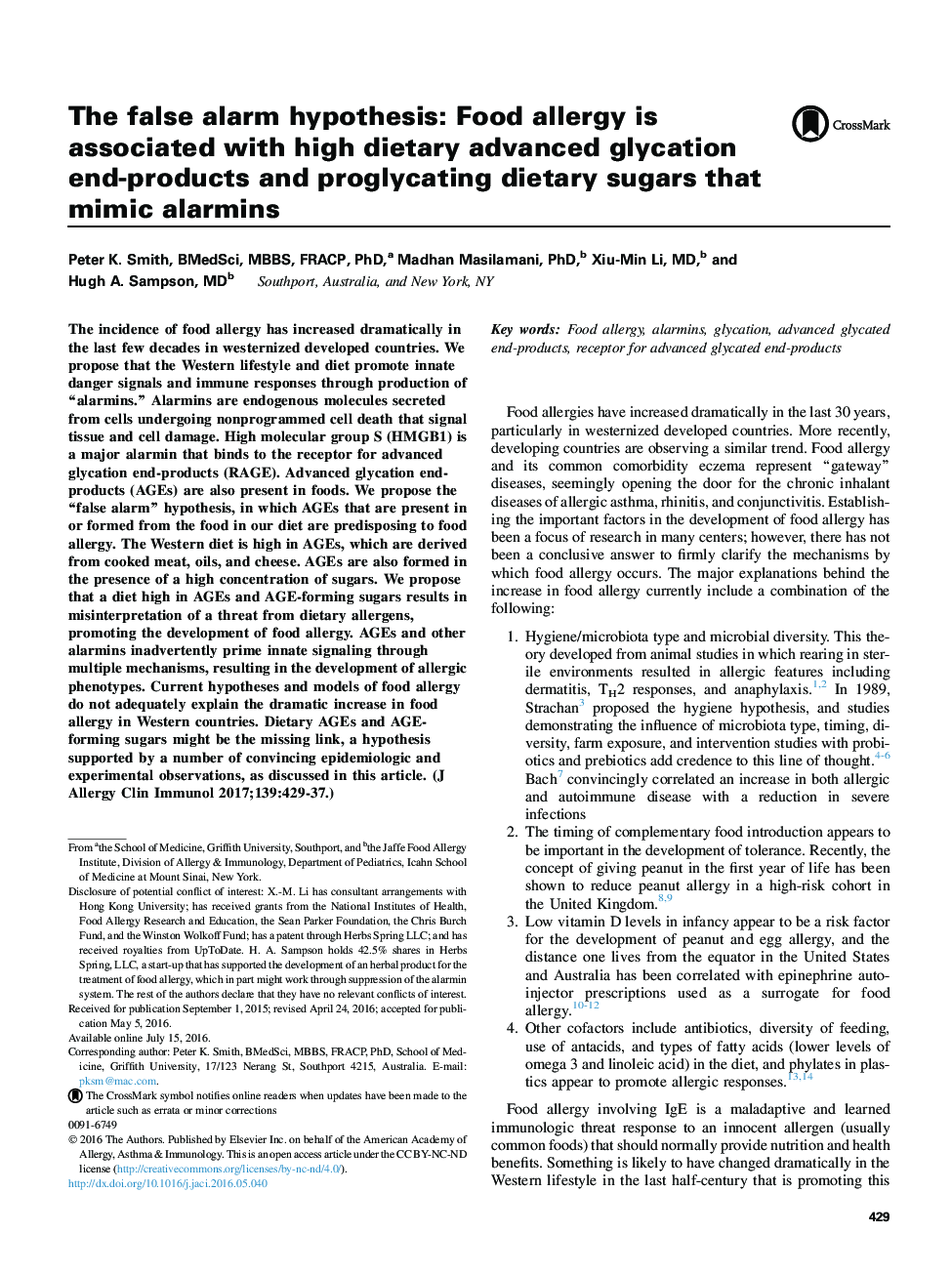| کد مقاله | کد نشریه | سال انتشار | مقاله انگلیسی | نسخه تمام متن |
|---|---|---|---|---|
| 5646712 | 1407070 | 2017 | 9 صفحه PDF | دانلود رایگان |
The incidence of food allergy has increased dramatically in the last few decades in westernized developed countries. We propose that the Western lifestyle and diet promote innate danger signals and immune responses through production of “alarmins.” Alarmins are endogenous molecules secreted from cells undergoing nonprogrammed cell death that signal tissue and cell damage. High molecular group S (HMGB1) is a major alarmin that binds to the receptor for advanced glycation end-products (RAGE). Advanced glycation end-products (AGEs) are also present in foods. We propose the “false alarm” hypothesis, in which AGEs that are present in or formed from the food in our diet are predisposing to food allergy. The Western diet is high in AGEs, which are derived from cooked meat, oils, and cheese. AGEs are also formed in the presence of a high concentration of sugars. We propose that a diet high in AGEs and AGE-forming sugars results in misinterpretation of a threat from dietary allergens, promoting the development of food allergy. AGEs and other alarmins inadvertently prime innate signaling through multiple mechanisms, resulting in the development of allergic phenotypes. Current hypotheses and models of food allergy do not adequately explain the dramatic increase in food allergy in Western countries. Dietary AGEs and AGE-forming sugars might be the missing link, a hypothesis supported by a number of convincing epidemiologic and experimental observations, as discussed in this article.
Journal: Journal of Allergy and Clinical Immunology - Volume 139, Issue 2, February 2017, Pages 429-437
